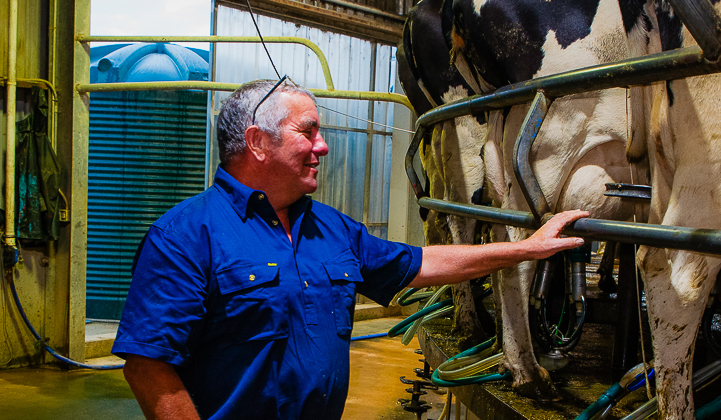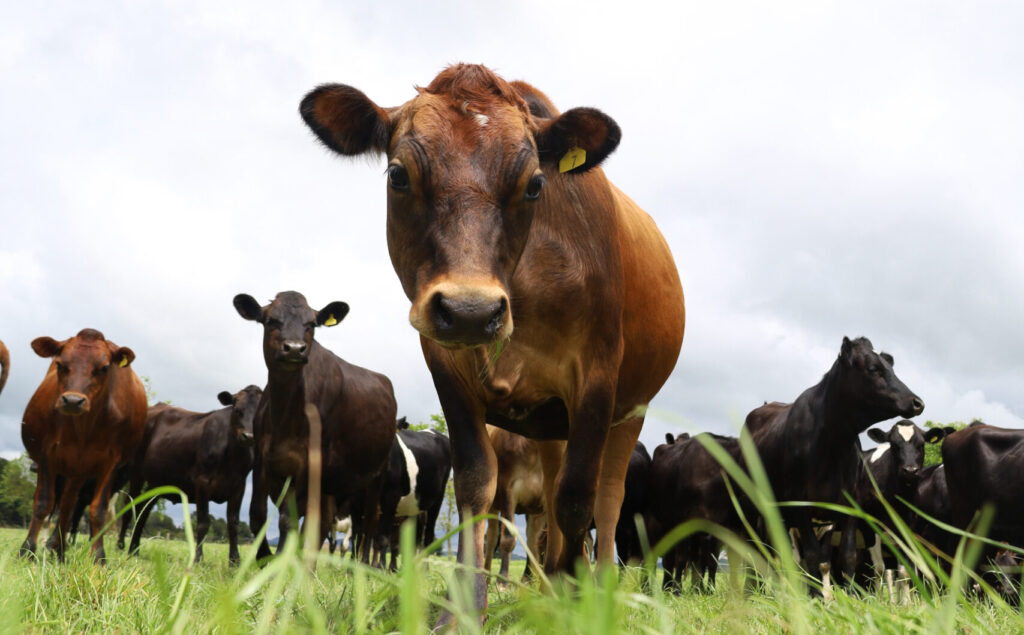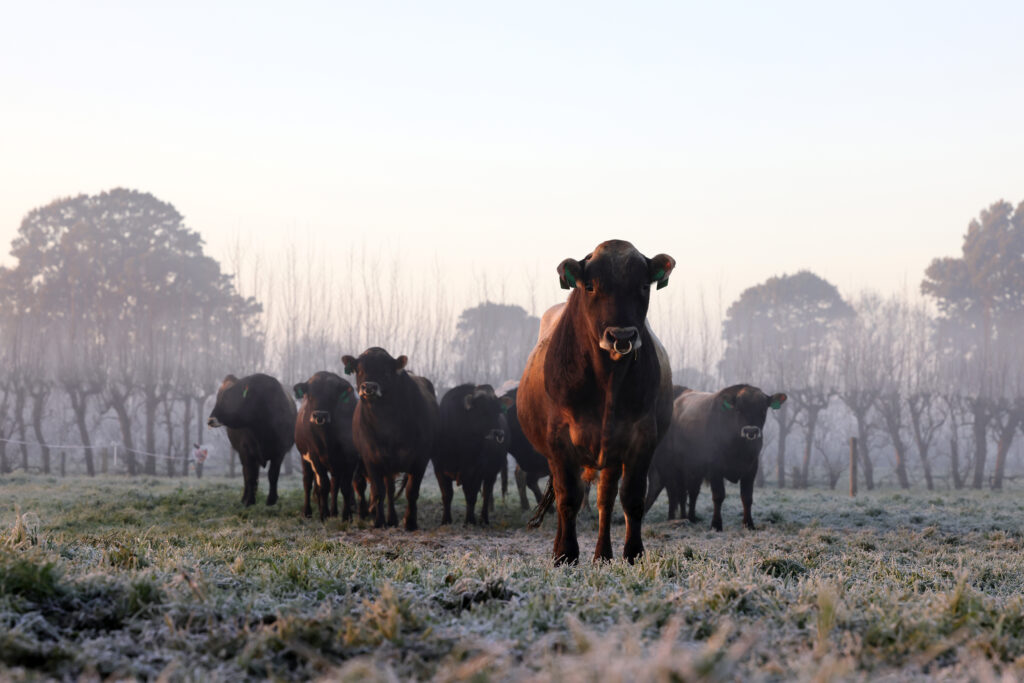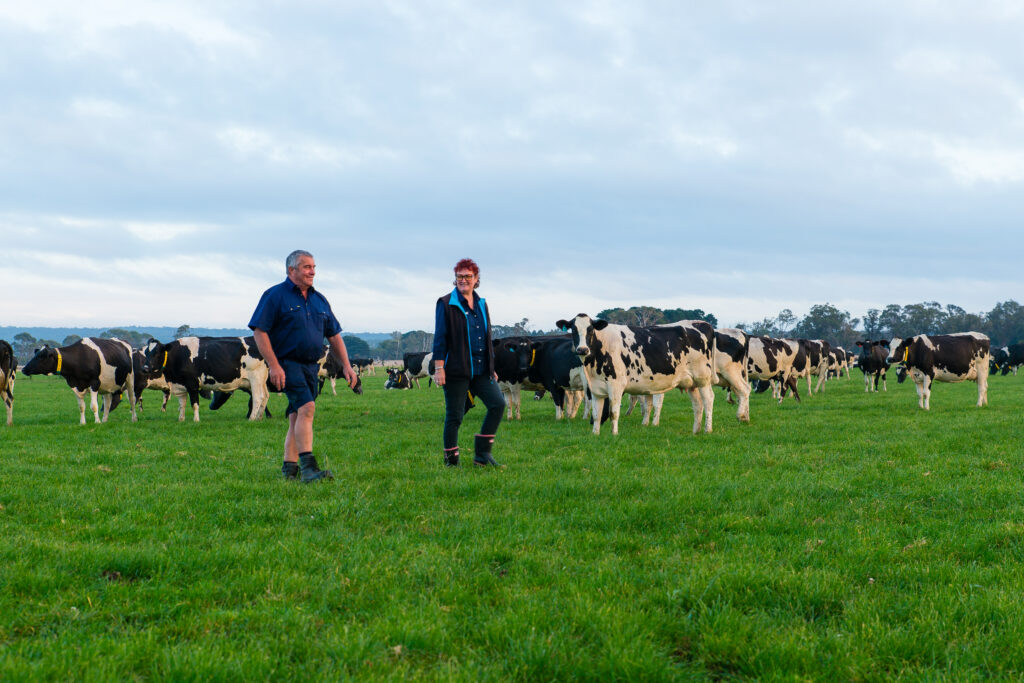North or south of the highway? It’s a question almost every dairy farmer in south west Victoria has been asked at least once. It’s a loaded query and generally asked with the purpose of generating a hypothesis about the type of farming conditions, and system, someone might operate.
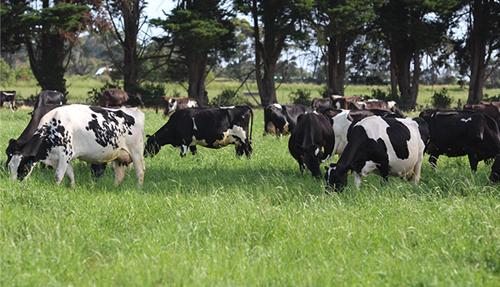
The Princes Highway, running from Melbourne, divides the low and high rainfall areas of the region. Warren and Leann Martin milk cows north of the highway in the lower rainfall country. But despite the challenges mother nature has thrown at them, the couple have reaped the fertility and production benefits of well-fed cattle.
Warren Martin is just finishing the evening milking.
Cup removers whip away the last few machines, as the animals back out of the rotary.
It’s a warm spring evening, perfect for cutting silage, but Warren doesn’t want to be anywhere else.
“If you have got a herd that you enjoy milking it is not difficult,” the
Glenormiston North dairy farmer said.
“It is easy, they don’t kick, their temperament is good. I’d milk any day rather than sit on a tractor.
I don’t like sitting on tractors and going round and round, but I’ll stand and milk no problem.”
Warren and his wife Leann developed their 320-crossbred herd using LIC genetics after purchasing cows from about nine different farms 15 years ago.
Mostly black, their cows and heifers now have a striking uniformity of size and weight.
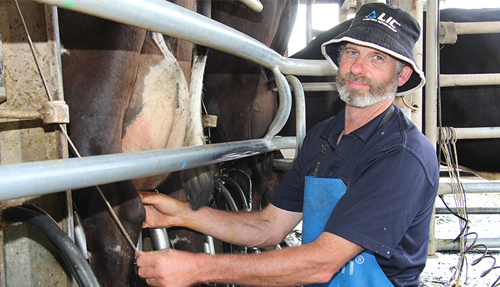
Even the heifers were hard to pick from the mature cows. Different coloured ear tags are the only distinguishing feature.
“I focus big time on making sure the heifers are as well grown as possible, so when they come into the herd they are nearly as big as the cows,” Warren said.
“If you feed them well, the heifers are not far off the cows when it comes to production. We can get 500 kg of milk solids from a heifer.”
The Martin’s herd averages 580 kg of milk solids per cow per year. For the bulk of the 300-320 herd, this milk production represents about 120 per cent of their body weight.
“At the largest they are about 500 kg, but they average 480 kg (liveweight),” Warren said. “We have one super- efficient older crossbred who’s about 450 kg. Going back four years ago, she produced just shy of 800 kg of milk solids. She’s now nine and still doing 700 kg milk solids thanks to her 4.5 per cent protein and 6 per cent fat test.”
These small-framed cows are not only good feed converters, but also suit the 550mm rainfall country. Their lighter frames limit pasture damage on the black loam soils and heavy black flats when it does get wet during winter.
This season has been one out of the box for Warren, Leann and their children Maurice 17, Denva 15 and Corbyn 14. The family’s herd was still grazing an abundance of pasture in late November.
“It has been a fantastic season and the best I’ve seen since we have been here.”
Ending on a high, this will be the last year the Martin’s milk cows. The family have sold their dairy farm with the cows due to be dispersed in the autumn.
This year couldn’t be more different to the start of Warren and Leann’s Australian dairy farming career.
Moving from New Zealand to purchase a farm, they had a trying start to milking cows in Western Victoria.
“It was a big shock to us when we came here in 2006,” Warren said. “It was a really dry year and we had to spend a huge amount of money, $250,000 on hay. It was tough. It gave us a hell of a shock and soon we realised we were milking too many cows.”
Warren and Leann started with 400 acres and 300 cows. This was quickly revised to 200 cows due to the weather conditions.
In the years since, and thanks to the addition of 250 acres, the farm’s stocked at two cows to the acre.
Most of the herd’s hay and silage requirements come from the property with the milking platform around 445 acres.
Having learnt from the first year at the farm, Warren said he prefers to remain slightly understocked to make sure there’s ample feed for all animals.
Pasture, homegrown silage and hay as well as some summer crop form most of the herd’s diet with grain feeding in the bail adjusted to match the season.
In July and August bail feeding can get up to about 6 kg a cow/day before the dial is turned back to about 4.5 kg/cow/ day for the rest of the year. This equates to about 1.3 tonne/cow/lactation, according to Warren.
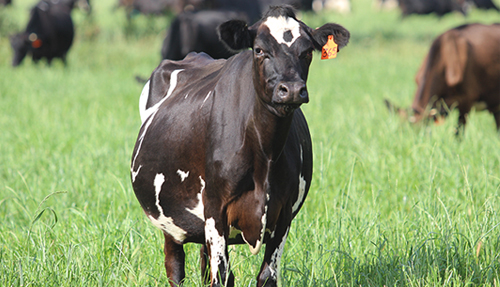
Nutrition complements breeding when it comes to production and fertility. Warren won’t hesitate to spend to maintain body condition.
“We buy two to three loads of good hay a year,” he said. “I just feed them. When it is in the autumn and you have mating around the corner, I do not hesitate.
If it costs me money, it costs me money, because at the end of the day, it is going to end up costing more money – just in a different way.”
Warren Martin
High fertility and low empty rates have enabled them to fast-track their herd’s genetic gain by culling cows on their production. They herd test four times a year, don’t have many empties and many cows continue to perform well into their later years.
The Martin’s herd calves seasonally from the middle of May for about 11 weeks. This year they did eight weeks of artificial insemination, mostly using calving-ease Friesian bulls, before the bull’s mopped-up for four weeks. In late November, they were yet to pregnancy test, but Warren and Leann generally have a 7-9 per cent empty rate.
Heifers are also artificially inseminated, synched using prostaglandin. This breeding program delivers ample heifers and provides Warren and Leann with plenty of options.
“Most years from AI we end up with more than 100 heifer calves,” Warren said. “We have sold some extra heifers as calves at two weeks old to other dairy farmers.”
Surplus Friesian heifers have also been sold to export to diversify the businesses’ income.
Leann selects all the bulls, with crossbred sires playing a large role in maintaining herd uniformity and size at 480-500 kg liveweight.
If some animals start to become too large, crossbred bulls are used to reduce the stature of the herd, but Friesian sires are preferred for the consistency of black animals.
Calves which look like Jerseys are generally sold to maintain the herd’s consistent appearance.
Ease of management is one of the highest breeding priorities for the couple.
“We like temperament, stature and love easy calving, we pick our bulls a lot by calving ease,” Warren said. “These crossbred cows will calve reasonably big calves if they are in good order. The cattle have got to be in good order, it makes a big difference when they calve.”
Warren said the calm temperament of his herd was something he valued, and it helped with staff training.
“I employ back packers, so someone who has never milked cows before can come and be doing it within a week,” Warren said. “It just shows you how good the cows are. The thing about LIC cows is their temperament that’s why I love them, their temperament is fantastic.”
LIC Western Victoria and South Australia District Manager Mike Waite has worked with the Martin’s for eight years.
“I’ve always been impressed with the Martin’s herd,” he said. “They have such an even line, and it is great to see a herd that has been put together with LIC genetics over a long time.
For someone testing the waters using LIC for the first time, the Martin’s herd is a great example of what can be achieved.”
This article published in our Autumn 2021 Green to Gold publication.
